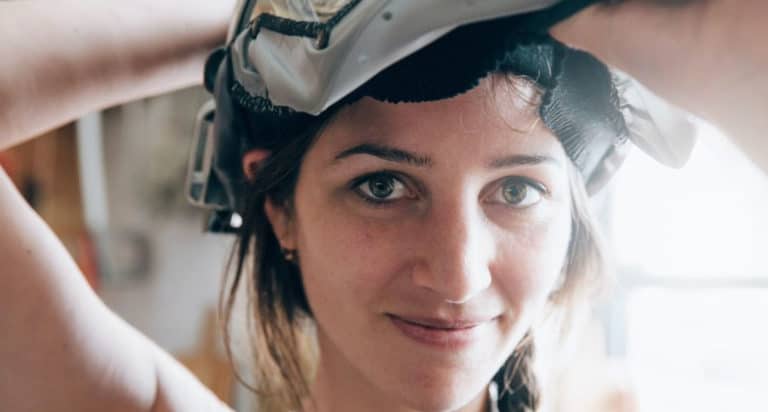After 70 years of downgrading and dismissing vocational ed — or what today is called Career Education Training (CTE) — America is taking a second look at this alternative to a bachelor’s degree, and you as a parent should too.

College is not a great fit for all teens
Teens have a huge range of skills and learning styles. Not all students shine in a lecture hall but they can be stars in a workshop or on a factory floor with some guidance and encouragement. I found this to be true as a mentor in a Virtual Enterprises class and while doing research for my young adult series, “Business-Minded Teens.”
A bachelor’s degree program is not to be embarked upon lightly. According to the Federal Reserve, student debt now averages almost $33,000 per student and generally cannot be discharged even by declaring personal bankruptcy. This is particularly sobering when you realize that more than 40% of bachelor’s degree candidates don’t graduate, yet they still have to repay those huge student loans.
“Our country now has cumulative student debt of $1.5 trillion, second only to mortgage debt, says Geoff Green, president of the Foundation for Santa Barbara Community College. “Parents should seriously consider their return on investment before urging their children to enter a bachelor’s degree program.” I second that motion.
Computers in the form of artificial intelligence (AI) are stealing their jobs. “White-collar workers, armed with college degrees and specialized training once felt relatively safe from automation,” says Kevin Roose, author of Futureproof. “But recent advances in A.I. and machine learning have created algorithms capable of outperforming doctors, lawyers, and bankers at certain parts of their jobs. And as bots learn to do higher-value tasks, they are climbing the corporate ladder.”
Roose cites recent studies that found that workers with Bachelor’s or graduate degrees were nearly four times as exposed to A.I. risk as those with just a high school degree.
Other opportunities with a career in the trades
But will a hands-on trade support your child? You bet! Consider these facts:
- While 10 million people are unemployed, 7 million jobs are going begging — and this “jobs mismatch” is only going to get worse because America’s workforce is aging. A 2018 survey found that almost half of all skilled tradespeople were over 45, including almost a quarter over 55. If you drill down into these statistics, you’ll find that 7,000 electricians enter the field each year, but 10,000 retire, and the American Trucking Association predicts a shortfall of 175,000 truck drivers within the next six years.
- It’s an article of faith for Americans that those with a B.A. earn more over a lifetime than those without one. But Georgetown University researchers found that workers with certificates in construction and other blue-collar trades often make more than liberal arts and humanities majors with bachelor’s degrees. Another study showed that the median salary for B.A. recipients from the most elite colleges 10 years after they matriculated was only about $70,000.
- Semi-skilled jobs are paying off, too. As a case in point, last year Walmart truck drivers earned an average of $87,500 and the company — which is currently seeking 500 drivers — expects those earnings to go up this year. Walmart is offering such enticements as no-touch freight, a predictable schedule, and even pay while you sleep. Check it out at www.Drive4Walmart.com.
- The government estimates that there are over 30 million jobs that pay an average of $55,000 a year and do not require a bachelor’s degree. If a skilled worker owns his own business, of course, he or she can earn much, much more. Incomes for even journeymen (beginning) crafts persons are in the top half of U.S. incomes and these incomes only increase with more skills and experience.
- Many of the jobs I’m talking about will never be outsourced. When a homeowner’s pipes burst, who’s he gonna call?
- The U.S. economy is changing. The manufacturing sector is growing and modernizing, creating a plethora of interesting, well-paying jobs for those with the skills to do them. But a survey of business leaders found that only 11% feel that college graduates have the skills their companies need.
- Finally, as part of his sweeping infrastructure plan, President Biden has called for replacing or refurbishing the country’s 45,000 structurally unsound bridges. “Good luck with that!” Welders are perennially near the top of the list of hardest-to-fill jobs.
What can parents do?
- For starters you can stop thinking of CTE as a “less than” for students who can’t make the grade academically. In my interviews with technical arts teachers, they said this misguided snobbery on the part of parents was the biggest obstacle they had to overcome.
- Open your eyes and your child’s to the myriad of opportunities out there. As 17-year-old Derrick Roberson told PBS, “All throughout high school, they made it sound like going to college was our only option.” He went on to train as an electrician.
- Lobby to get modern vocational ed back in your high school, and investigate dual high school/community college programs, too. Community colleges are not only the major source of job training today, they are also a great conduit to apprenticeships, internships, credentialing, and informal on-the-job training. Just because your children are not enrolled in a B.A. program doesn’t mean they won’t be lifelong learners. It’s just that this way they can “earn and learn” at the same time.
I leave the last word on this subject to Danny Corwin, executive director of Harbor Freight’s “Tools for Schools” program. “We know that many kids are better at working with their hands-heart-mind rather than with their mind alone,” says Corwin.
We need a more open-minded society because there are multiple pathways to doing well and being fulfilled in life. Whether you go into the trades or not, the skills you learn in CTE will help you be self-sufficient your whole life. And if you do go into the trades, you’ll find good American jobs waiting for you.








